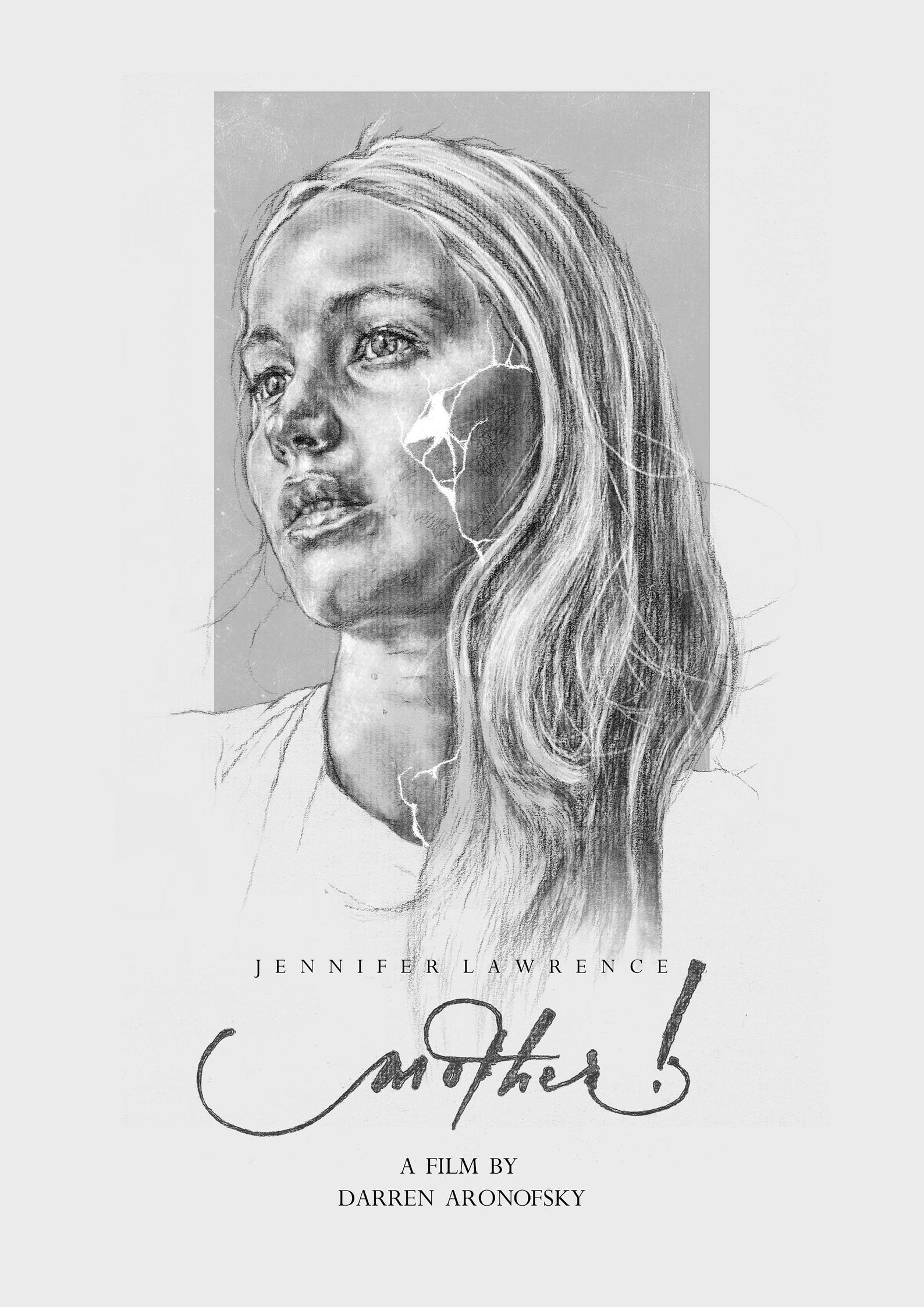The media are not toys… they can be entrusted only to new artists, because they are art forms.
(McLuhan, 1954)
Film Poster Project
For this project, my aim was to produce a series of three illustrated film posters, and resolved that these would be Melancholia (2011), Mother! (2017) and Midsommar (2019).
I chose these films not just because of the coincidental fact that they all begin with the letter ‘M’, but also in how they relate to each other in much more interesting aspects. Firstly, the directors of each film are similarly notable for their uncompromisingly dark arthouse features, renowned for burying themselves into the psyche of the viewer. These directors are Lars Von Trier, Darren Aronofsky and Ari Aster.
A second aspect, and one that is rarely seen in cinema, is the fact that each of the three films features a young female protagonist experiencing extreme levels of psychological distress. In Melancholia, Kirsten Dunst’s character Justine is consumed by a debilitating depression, to the extent of essentially being catatonic, unable to take baths without assistance and feeling so numb her meals taste like ashes. In Mother!, Jennifer Lawrence’s titular character endures major mental trauma when her home is invaded by intruders, which inexplicably develops into a nightmarish scenario where she is eventually beaten and her newborn baby is killed and eaten. Lastly, in Midsommar, Florence Pugh’s Dani is terrorised by a pagan cult, all the while suffering from frequent panic attacks triggered by the trauma of the death of her family.



The three films also link thematically and conceptually, with Mother! essentially acting as a bridge between the other two films. This is because of Mother!’s capacity to be interpreted in various different ways, either in a religious or environment sense.
In a religious context, the titular character of Mother is essentially a Mother Mary figure, who procreates with Javier Bardem’s God-like character to produce a Christ figure in their newborn baby. When the baby is killed and eaten by the intruders at their house, it’s a metaphor for a Christian mass and the notion of Jesus offering up his flesh and blood. It’s a theory that’s strengthened by the obvious retelling of the Old and New Testament at the beginning of the film.
These ritualistic and sacrificial aspects puts Mother! in direct parallel with Midsommar, and the ceremonial acts of the pagan cult Dani visits with her boyfriend and his friends. Towards the end of the film, after witnessing numerous slaughters and disappearances, Dani discovers that nine human sacrifices must be offered to purge the commune of its evil. This act of barbarity for the sake of religious beliefs, I feel, correlates quite strongly with the disturbing baby scene in Mother! Additionally, to add further to the comparison, both films end with a particular focus on fire: a burning temple at the end of Midsommar, and a burning house at the closing moments of Mother!
In a religious context, the titular character of Mother is essentially a Mother Mary figure, who procreates with Javier Bardem’s God-like character to produce a Christ figure in their newborn baby. When the baby is killed and eaten by the intruders at their house, it’s a metaphor for a Christian mass and the notion of Jesus offering up his flesh and blood. It’s a theory that’s strengthened by the obvious retelling of the Old and New Testament at the beginning of the film.
These ritualistic and sacrificial aspects puts Mother! in direct parallel with Midsommar, and the ceremonial acts of the pagan cult Dani visits with her boyfriend and his friends. Towards the end of the film, after witnessing numerous slaughters and disappearances, Dani discovers that nine human sacrifices must be offered to purge the commune of its evil. This act of barbarity for the sake of religious beliefs, I feel, correlates quite strongly with the disturbing baby scene in Mother! Additionally, to add further to the comparison, both films end with a particular focus on fire: a burning temple at the end of Midsommar, and a burning house at the closing moments of Mother!
In another viable interpretation, Mother! is an environmental story told from the perspective of Mother Earth, with the house acting as Earth itself. Evidently, the onslaught of invaders causing chaos and destruction is an allegory for mankind’s treatment of the planet, and it’s in this metaphorical treatment of a planet that Mother! can now relate to Melancholia.
In Melancholia, the metaphorical planet is not Earth but the titular planet of Melancholia, which is actually heading on a deadly path towards Earth. Melancholia is less environmental like Mother! and more astronomical in its handling of a planet. However, similar to the allegories in Mother!, it’s essentially a symbolic backdrop to Justine’s depression, and her stoic reaction to the obliteration of Earth in comparison to her non-depressive, and subsequently hysterical, sister.
In Melancholia, the metaphorical planet is not Earth but the titular planet of Melancholia, which is actually heading on a deadly path towards Earth. Melancholia is less environmental like Mother! and more astronomical in its handling of a planet. However, similar to the allegories in Mother!, it’s essentially a symbolic backdrop to Justine’s depression, and her stoic reaction to the obliteration of Earth in comparison to her non-depressive, and subsequently hysterical, sister.

Above are the final illustrations I submitted for my university project. As evident, the three posters connect stylistically in their colour pallettes and compositional elements, which is what I set out to achieve.
However, I was ultimately disatisfied with the final result, and since then I have developed the illustrations to have a monochrome pallette. The results can be seen below.


